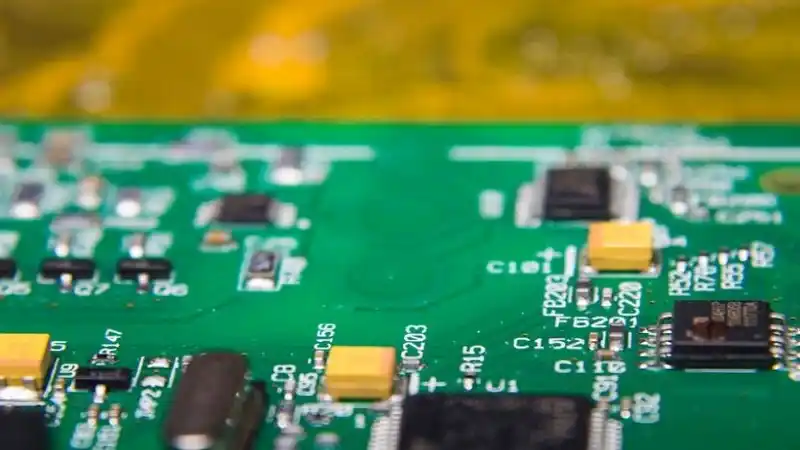In the world of printed circuit boards (PCBs), the ground (GND) plays an essential role in ensuring the proper functioning of electronic devices. A well-designed ground system is the foundation for effective signal integrity, power distribution, and electromagnetic interference (EMI) management. Mismanagement of the ground plane can result in system instability, signal degradation, and noise interference. This article delves into the importance of GND in PCB design and explores how to optimize its performance for reliability and efficiency.
What is GND in PCB?
GND, or ground, refers to the reference point in an electrical circuit from which voltages are measured. It typically represents zero volts and is the common return path for electric current. In a PCB, the ground is crucial because it ensures a stable reference for all components and provides a low-resistance path for the return currents of various signals.
Depending on the specific application and design needs, a PCB may have different ground types, such as digital ground (DGND), analog ground (AGND), or chassis ground. However, the general principles governing the design of ground systems are largely universal and focus on minimizing noise and ensuring stable performance.
The Importance of a Solid Ground System
- Signal Integrity: Signal integrity is vital in maintaining the quality of electrical signals as they travel across the PCB. The ground plane acts as a reference plane for signals traveling on other layers of the board. Without a solid, continuous ground plane, signal reflections, cross-talk, and noise can degrade signal quality, leading to malfunctions or erroneous data transmission.
- In high-speed digital circuits, the return currents for signals follow the path of least impedance, which is typically the ground plane located directly beneath the signal trace. If this path is disrupted (e.g., due to a gap in the ground plane or poor layout design), the return currents may take longer, more convoluted paths, increasing the potential for signal noise and electromagnetic interference.
- Power Distribution and Stability: Ground planes are also critical for distributing power throughout the PCB. A well-designed ground system allows for uniform current distribution across the board, ensuring that all components receive stable and reliable power. This is particularly important for sensitive analog circuits or high-speed digital devices, where voltage fluctuations can lead to signal distortion or system instability.
- A continuous, low-resistance ground plane also minimizes voltage drops across the board, improving overall performance. In multi-layer PCBs, it is common to use one or more dedicated layers for ground and power to enhance this stability further.
- Electromagnetic Compatibility (EMC): Poor ground design can lead to excessive electromagnetic interference (EMI) emissions, making the device non-compliant with electromagnetic compatibility (EMC) standards. The ground plane helps to absorb and shield the PCB from external electromagnetic interference, while also preventing the PCB from radiating EMI.
- A continuous ground plane provides an effective shield against high-frequency noise, helping to confine noise to specific areas of the PCB. By reducing EMI emissions and susceptibility, a robust ground system helps ensure that the device operates as intended without interference from external sources.
Best Practices for Designing GND in PCB
To optimize ground system performance, PCB designers should follow several best practices. These guidelines help minimize noise, ensure signal integrity, and improve overall system reliability.
- Use Solid Ground Planes: One of the most important rules in PCB design is to use a continuous, unbroken ground plane. A solid ground plane provides a low-impedance path for return currents and reduces the risk of noise and signal reflection. Avoid splitting the ground plane unnecessarily, as this can lead to improper current paths and increased EMI.
- Minimize Ground Loops: Ground loops occur when there is more than one ground connection in a circuit, creating unintended current paths. These loops can pick up noise and increase the risk of signal interference. To avoid ground loops, ensure that all ground connections are routed to a single point or plane, known as a “star grounding” system.
- Dedicated Ground Layers: In multi-layer PCBs, it is common to dedicate entire layers to ground. These dedicated ground planes improve signal integrity and reduce EMI by providing a low-impedance return path for signals. In high-speed designs, keeping a dedicated ground plane close to the signal layer is critical for minimizing noise and improving performance.
- Short and Direct Ground Connections: Ground connections should be kept as short and direct as possible to reduce parasitic inductance and resistance. Longer paths can introduce impedance and noise into the system, compromising performance.
- Stitching Vias: When multiple ground planes exist on different layers, stitching vias are used to connect these planes and maintain a continuous ground path. These vias help reduce EMI and ensure that return currents flow properly between layers. The placement of stitching vias should be carefully considered, especially around high-speed signal paths.
- Isolate Analog and Digital Grounds: In mixed-signal designs, it’s essential to separate analog and digital ground planes to prevent high-frequency digital noise from interfering with sensitive analog circuits. These planes can be connected at a single point (star grounding) to ensure proper return paths while maintaining isolation.
Conclusion
In PCB design, the ground (GND) system is the foundation that ensures stable and reliable operation of the entire circuit. A well-designed ground plane minimizes noise, improves signal integrity, enhances power distribution, and helps ensure compliance with electromagnetic compatibility standards. By following best practices—such as using solid ground planes, minimizing ground loops, and using dedicated ground layers—designers can optimize their PCB layouts for maximum performance and reliability.
As electronic devices become increasingly complex, the importance of proper ground design cannot be overstated. A robust GND system not only ensures the functionality of the PCB but also paves the way for long-term reliability, lower EMI emissions, and improved overall performance.
